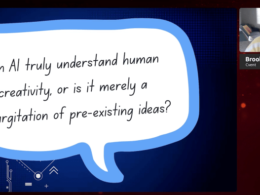Researchers from the Australian National University, the University of Oxford, and the Beijing Academy of Artificial Intelligence have developed a groundbreaking AI system called “3D-GPT”. This system has the capability to generate 3D models based solely on text-based descriptions provided by the user, offering a more efficient and intuitive approach to 3D content creation.
Enhancing 3D Modeling Workflows
The “3D-GPT” system is able to dissect procedural 3D modeling tasks into manageable segments and appoint the appropriate agent for each task. By utilizing multiple AI agents, the system is able to understand the text prompt and execute modeling functions effectively.
“3D-GPT positions LLMs [large language models] as proficient problem solvers, dissecting the procedural 3D modeling tasks into accessible segments and appointing the apt agent for each task,” the researchers stated.
The key agents within the “3D-GPT” system include a “task dispatch agent” responsible for parsing text instructions, a “conceptualization agent” that adds missing details to the initial description, and a “modeling agent” that generates code to drive 3D software such as Blender.
This modular approach allows the system to interpret text prompts, enrich descriptions with additional details, and ultimately generate 3D assets that align with the user’s vision. The researchers explain, “It enhances concise initial scene descriptions, evolving them into detailed forms while dynamically adapting the text based on subsequent instructions.”
Potential Impact and Future Advancements
To test the system, prompts like “a misty spring morning, where dew-kissed flowers dot a lush meadow surrounded by budding trees” were used. Remarkably, “3D-GPT” successfully generated complete 3D scenes with realistic graphics that accurately reflected the elements described in the prompts.
Although the graphics quality is not yet photorealistic, the early results indicate that this agent-based approach holds promise for simplifying 3D content creation. Furthermore, the modular architecture of the system allows for independent improvements of each agent component. The researchers state, “Our empirical investigations confirm that 3D-GPT not only interprets and executes instructions, delivering reliable results but also collaborates effectively with human designers.”
By generating code to control existing 3D software instead of building models from scratch, “3D-GPT” provides a flexible foundation for future advancements in modeling techniques. The researchers believe that this system marks the potential of large language models (LLMs) in the 3D modeling industry, offering a basic framework for future advancements in scene generation and animation.
Revolutionizing the 3D Modeling Industry
This research has the potential to revolutionize the 3D modeling industry by streamlining the creation process and making it more accessible. As we enter the metaverse era, where 3D content creation plays a crucial role, tools like “3D-GPT” could prove invaluable to creators and decision-makers across various industries, including gaming, virtual reality, cinema, and multimedia experiences.
Although the “3D-GPT” framework is still in its early stages and has some limitations, its development represents a significant advancement in AI-driven 3D modeling. Exciting possibilities lie ahead as the system continues to evolve and improve.









